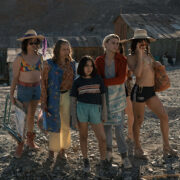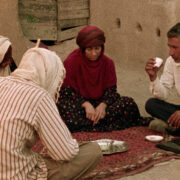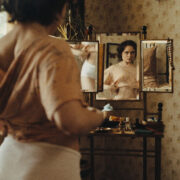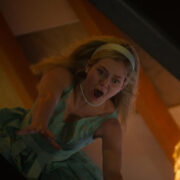The Top 25 Films Of 1939: A Look Back At “The Greatest Year In Movies”
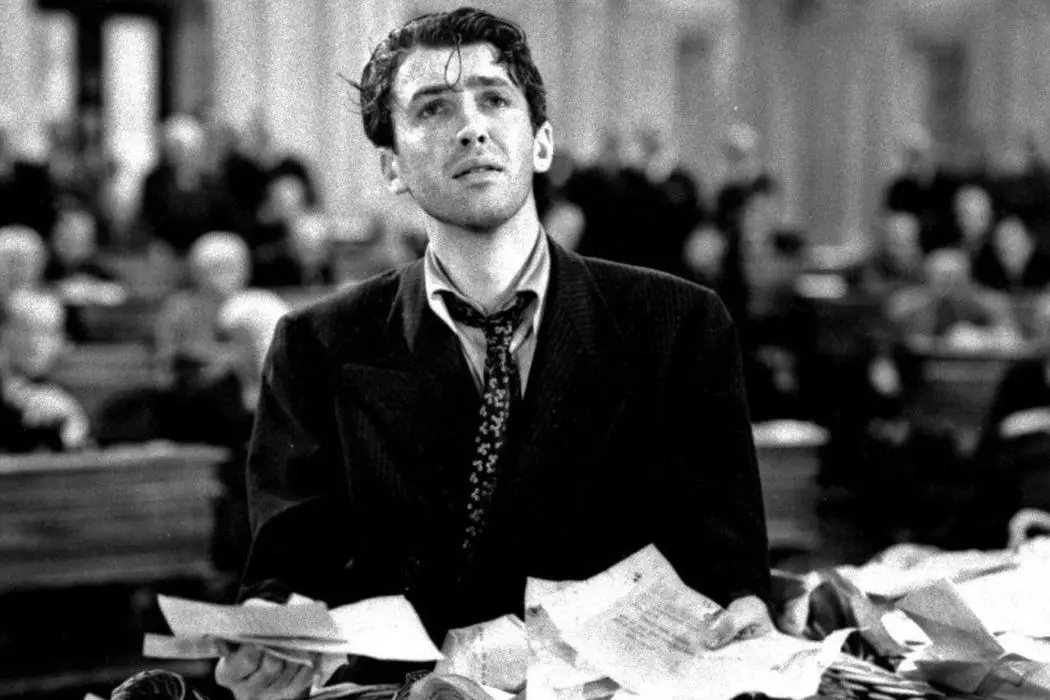
Tynan loves nagging all his friends to watch classic movies…
The glorious Emerald City of Oz. A tracking shot to introduce John Wayne to the world. James Stewart falling to the floor in exhaustion during his monumental filibuster. Clark Gable‘s iconic last words as he walks out of Tara. These are all indelible moments in cinema and they all, coincidentally, originated from the same historic year.
A staggering 80 years have passed since the so-called “Greatest Year In Movies.” Therefore, it seems only natural to join everyone else in quibbling over our own favorites from that hallowed year of Hollywood yore. One of our esteemed colleagues already conducted an in-depth analysis of Gone With The Wind and The Wizard of Oz, in celebration of the anniversary.
It was a superb jumping off point but we wanted to continue the conversation. For the sheer exhilaration of the challenge and the desire to torment ourselves completely, here is a highly subjective list of the Top 25 Films of 1939 (with 14 honorable mentions, of course). Please enjoy!
1. Mr. Smith Goes to Washington
The moment Jefferson Smith steps out onto the Senate Floor to take his final stand against the opposition gives me, to this very day, some small amount of solace in a world of corrupt business and dirty politics. Guided by Frank Capra‘s humanism and anchored by a career-altering turn by Jimmy Stewart, it’s hard to consider a more emblematic picture of American ideals. In spite of more high profile efforts, the cast including Jean Arthur and Claude Rains is so rich and the themes so universal, it’s hard not to keep championing this venerated classic. For those jaded by politics, it remains a sterling beacon of hope.
2. The Wizard of Oz
What is American cinema without Dorothy’s Red Shoes, Toto, Oz, and The Wicked Witch of The West? They are so much a part of the fabric of our cultural identity. This adventure whirling Judy Garland away to a fanciful Technicolor world, complete with yellow brick roads and flying monkeys, puts no limit on imagination. What strikes me is the integral theme of how our journeys always lead us back home. It seems apropos the iconic tune “Somewhere Over The Rainbow” sums up this cycle of life in its very progression. The song’s notes allow us to return back home to our world with newfound appreciation.
3. Gone With The Wind
As the years pass, it’s easy to get more and more disillusioned with the issues this monumental Civil War epic exhumes given our ignominious past with slavery and racial prejudice toward African-Americans. However, even within this complicated dialogue, there’s no downplaying the cultural clout of such screen stars as Scarlet O’Hara (Vivien Leigh) and Rhett Butler (Clark Gable). Exquisitely photographed and the epitome of Hollywood grandeur, its own tumultuous production nevertheless birthed one of the quintessential Hollywood blockbusters. The sheer epic scale and box office share of the film has rarely been matched since.
4. Rules of The Game
Among many discerning voices, Jean Renoir is named one of the greatest filmmakers of all time and though vehemently maligned in its time — a society on the verge of war wasn’t ready for satire — the French master’s upstairs-downstairs comedy seamlessly showcases his immense talents. There is not only an innate love of people present, even as he pokes fun at them, but also a perceptiveness as to their predilections, even their own callousness. With the outbreak of WWII only months later, its playfully incisive nature was probably too prescient to be appreciated. It faces no such problem now.
5. Stagecoach

It’s fitting to follow one painterly master with another as John Ford did with the American West what Renoir did with the Parisian countryside. Not only did this unassuming western make a true star out of John Wayne, it all but propelled the scoffed at sagebrush genre into a position of newfound significance. Stagecoach functions as a cross-country chamber piece throwing an abrasive mix of characters together, not least among them Claire Trevor and Thomas Mitchell. Most importantly of all, it cemented the partnership between Duke and Pappy for decades to come.
6. Only Angels Have Wings
Howard Hawks might be more well-known for other pictures, but few projects tap into his own passions quite like this South American-set adventure drama about aviation. Cary Grant and Jean Arthur drum up the complicated chemistry in a world of harrowing danger where lives are seemingly won and lost at the flip of a coin. The dismissed silent star Richard Barthelmess gets a crucial role as a disgraced pilot dumped with every suicide mission while his sultry wife is played by none other than a young Rita Hayworth. It’s one of those films with atmosphere in spades.
7. The Women
In an industry so often dominated by men, this uproarious all-star comedy loaded with verbal poison and catty claws is something of a marvel. The cast is sublime, stacked with a who’s who of ’30s era talent including Norma Shearer and Joan Crawford dueling for the affections of the former’s unseen husband. But the ensemble, directed by George Cukor, is blessed equally so by a scene-stealing Rosalind Russell, a spunky Reno divorcee played by Paulette Goddard, and the ever demure Joan Fontaine. It is rarely such a joy to watch gossip and malicious backstabbing conducted with such rampant abandon.
8. Young Mr. Lincoln
We’re used to grandiose cradle-to-grave biopics. Leave it to John Ford to take the pre-presidential days of Abraham Lincoln and make it another fine meditation on the American Way. Of course, more than anything, it benefits from the always steady, ever dependable work of Henry Fonda who falls into Honest Abe’s shoes seamlessly. Not by trying to mimic him in any way but by bringing his own plain-speaking authenticity into the courtroom as he looks to win the most crucial case of his fledgling career. Certainly there are obvious stakes to the drama but guided by Ford, there is just as much time allotted for wit and warmth.
9. Le Jour Se Lève
While never as acclaimed as his countryman Renoir, Michel Carne was still a prominent force behind the poetic realism movement. This smoke-infused picture uses its opening as a shocking hook only to funnel into an extended flashback. Somewhere between Spencer Tracy and Humphrey Bogart stands Jean Gabin. He comes equipped with his own substantial stage presence and melancholy behind the eyes. Between the shadowy interiors, bullets flying, and deadly love affairs involving Arletty, Carne might as well be inventing the conventions of film noir. The final sequence is suitably dismal for this to hold true.
10. The Story of The Last Chrysanthemum
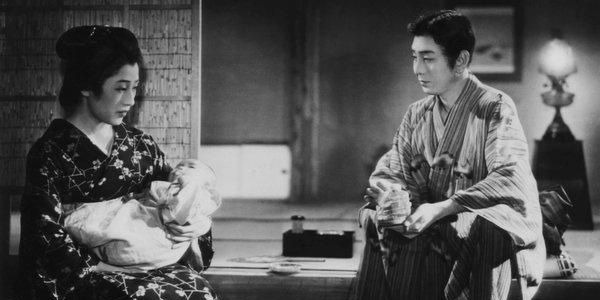
Of the foremost Japanese masters, Kenji Mizoguchi can most easily be tied to the traditional Japanese art forms. This early work is a fascinating portrait because it bears some of the trademarks which would all but define his career at its most sublime. His glorious tracking shots unfurling like ancient Japanese scroll paintings. Then the meticulous nature of the images marked by invention and novel mise-en-scene. The tale of a struggling kabuki actor also employs the archetypal theme of a subjugated woman forced to make the ultimate sacrifice. It plays as a lugubrious epic but nevertheless, proves itself to be artfully done on all accounts.
11. Wuthering Heights
William Wyler‘s collaboration with Gregg Toland blessed the world over with deep-focus photography. Wuthering Heights was one of the early benefactors. Laurence Olivier and Merle Oberon‘s projections ultimately prove rapturous even if the illusion is somewhat broken by the realization that the two actors abhorred each other off camera. Regardless, their piercing love story, based on Emily Bronte’s novel, speaks to the human desire for abiding, even eternal, romantic contentment. Heathcliff rashly prays to be haunted by Kathy — for the ghost of her to torment him — because he cannot live without his soul: The woman he loves.
12. Hunchback of Notre Dame
Charles Laughton‘s turn as Quasimoto is a highpoint in his illustrious career as he willfully commits to a character in all of his outward ugliness while still endowing him with a tender heart. Like all the great adaptations out of Hollywood, the palpable world being constructed here is one of the most prominent assets. It’s not always a faithful distillation of Victor Hugo and yet it never ceases to amaze me for the sheer amount of atmospheric settings being brought to screen. There is no better lass to portray Esmerelda than Maureen O’Hara as fiery and supernally beautiful as she is. This is, without a doubt, a period piece on the grandest scale.
13. Love Affair
Most everyone recalls the hopelessly romantic An Affair to Remember through its homage in Sleepless in Seattle. This is the superior grandparent directed by the underrated Leo McCarey. His leads supply most of the enduring charm because Charles Boyer was the epitome of continental suavity and the always witty Irene Dunne, often criminally forgotten today, lends a free-and-easy chemistry to their whirlwind ocean liner romance. They intuitively understand all the necessary beats ranging from humor, deep tragedy, and high sentiment. The film is more than able to touch all three.
14. Goodbye Mr. Chips
The disarming allure of this story is indebted to Mr. Chips and how he reflects all that is admirable about education. The story could very easily be a stuffy old drama under the often moribund eye of Sam Wood. However, with leads so winsome as Robert Donat and the ever effervescent Greer Garson, there’s little danger of such a grisly fate. What an amiable movie it is, championing pleasantness over any strain of abrasive negativity. It’s hardly fashionable or radically cutting edge. Then again, maybe a dose of chipper, idealistic entertainment goes against the grain in this often disillusioned world of ours.
15. Destry Rides Again
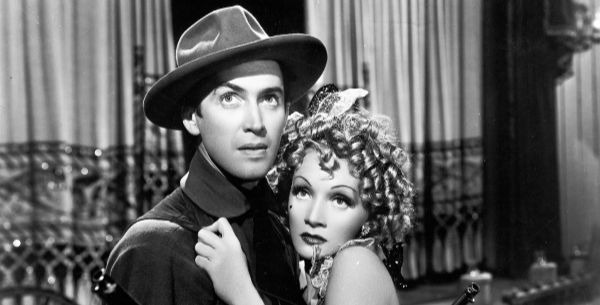
The movie is such a joy partially because it feels like one of the first times western tropes are very consciously being lampooned. Bottleneck is complete with a crooked bar owner (Brian Donlevy) and Frenchy (Marlene Dietrich) who has the whole town swooning. Jimmy Stewart arrives not as a heartless lawman but as his typically gangly, good-natured self. The chaos that ensues is as uproarious as it is devastating involving everything from cold water dousings and mobs armed with rolling pins. A budding romance between our two leads is inevitable but the greatest relish comes from Stewart‘s disarming charm capable of subduing the lawless land.
16. Midnight
Billy Wilder and Charles Brackett stole the conceit from Cinderella with a penniless party-crashing Claudette Colbert as their heroine and John Barrymore as the resident fairy godmother. With the premise already deliriously screwy and an affable Don Ameche and disaffected Mary Astor thrown into the c*cktail, it does well to keep the wonky fairy tale alive. The humor is at its best when all the moving parts collide in a glorious cacophony. Bluffs are called and new fanciful fibs are dreamed up and covered for. Despite Mitchell Leisen having a decent directorial eye, Wilder would soon aspire to maintain creative control over his material.
17. Ninotchka
Greta Garbo was always a beloved goddess of romantic drama. Thus, the tagline “Garbo Laughs” was quite the pronouncement. It was really a once-in-a-lifetime opportunity as one of the most renowned performers of the 20th century partnered with Ernst Lubitsch, Hollywood’s resident king of wit and sophistication. However, the script was very much a Billy Wilder invention with Garbo’s brusque proletarian grating against the laissez-faire attitude of Mervyn Douglas. On the cusp of WWII, it finds an ample amount of comedic fodder out of the divergent philosophies of capitalism and communism.
18. Gunga Din
With age, the colonialistic backdrop of Rudyard Kipling’s source material feels grotesque and unfeeling, now more than ever before. Despite the problematic context, it’s hard to ignore the rip-roaring adventure thrust upon us lead by a strapping bunch of heroes like Cary Grant, Douglas Fairbanks Jr., and the ever boisterous Victor McLaglen. Helmed by George Stevens, the picture is a testament to camaraderie, gamesmanship, and what William Goldman later termed “stupid courage.” “You’re a better man than I am, Gunga Din” takes on resonant significance in the film’s stirring finale during the onslaught of the Thuggee cult.
19. The Roaring Twenties
Though tired of the gangster genre, Jimmy Cagney went out with a bang before his extended hiatus. The trick of this film’s success is indebted to his usual charismatic performance and a plot plucked out of history. Raoul Walsh, with his typical competency, delivers a fine drama based on the heyday of bootleggers during the Jazz Age. Humphrey Bogart was still secondary, always subservient to Cagney but that didn’t mean he was any less a gangster. It’s the rise and fall of the Warner Bros. antihero we’d been seeing since the early days, canonized forever through Glady George‘s final words: “He used to be a big shot.”
20. The Adventures of Sherlock Holmes
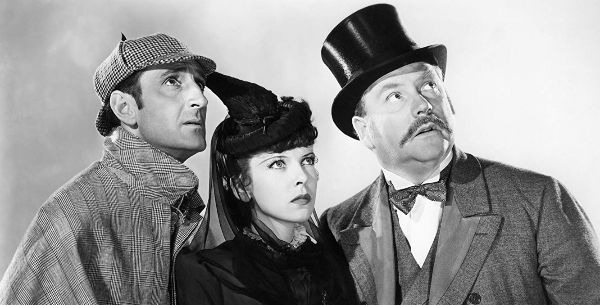
The movie plays as a perfect melding of Arthur Conan Doyle’s eponymous detective and the fanciful idea mills of Hollywood. While Watson (Nigel Bruce) is much the oaf to make our hero look that much more perceptive (Elementary, my dear Watson), Holmes (Basil Rathbone) does face a worthy adversary in Moriarty (George Zucco). Amid the narrative of murder, priceless jewels, and distressed clientele (Ida Lupino), the Edwardian atmospherics amp up the intrigue. Despite this inherent artificiality, it gives way to beautifully lit interiors and a smashing climax on the top of The Tower of London.
21. Of Mice and Men
John Steinbeck had a gift for bringing a personal slice of America to a broader audience. What strikes me about Of Mice and Men is how it manages to be an ode to the common man. In keeping with this, Lewis Milestone‘s cast included mostly unknowns and minor actors across the board. Burgess Meredith and Lon Chaney Jr. feel all but impeccable as the disparate pair at the forefront of this story. Meredith has the acumen and heart to really step into the part of George and Chaney comes off so seamlessly as the simple-minded teddy bear of a man. In a harsh world, this is a tale of not only tragedy but also unwavering hope.
22. Dodge City
Errol Flynn plays a cowboy. The palette is Technicolor but the action is focused on interiors opposed to magnificent plains. It’s not Ford. It’s not Wayne. Yet it manages to be a fine actioner due to compelling characterizations, deep-seated conflict, and enough gunplay to make it a true horse opera. Olivia De Havilland abhorred the unimaginative parts she was being handed but her ample talents leave an imprint on the picture. It’s the old story of civilization moving in to push out corruption. Someone must have the guts to lead the crusade with ideals and guns, if necessary. But it takes a community behind him to make it stick.
23. Dark Victory
Even as someone never quick to fawn over Bette Davis, there’s no recourse but to laud her performance. The tearjerking melodrama is a precarious affair because it must throw out all sorts of tragedies and sentimentalities compelling the audience such that they don’t completely laugh off the whole things as utter poppyc*ck. The good ones take us through the paces and still manage to get to us. Even as Dark Victory teeters somewhere in the middle for a while the sheer tornado frenzy of life within Davis in the face of death wins out. She all but sticks the landing carrying the drama with her implacable performance.
24. Bachelor Mother
The premise has screwball written all over it thanks to mutual miscommunication about a swaddled infant left on the steps of an orphanage. Much of the film is about presumed parentage carried with aplomb by Ginger Rogers and David Nivens. Rogers is often only attached to the name Astaire. However, this is one of the finest showcases for her talents as a pure comedienne supplying an uproarious performance at a New Year’s Eve Party, among other amusements. Then, who better to play the avuncular father figure than Charles Coburn, utterly appalled at his son’s apparent indiscretions? Pure mania straight down the line.
25. In Name Only
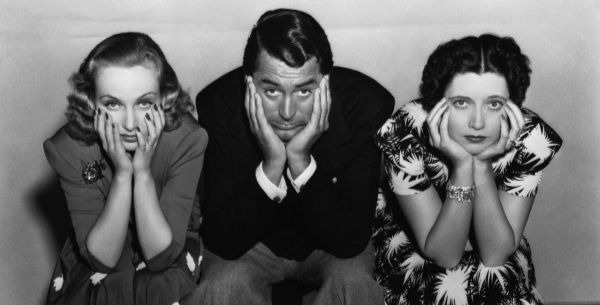
If you know the two actors on the marquee, Cary Grant and Carole Lombard, you would come to expect a comedy on most any given occasion. Oddly enough, this movie is very much a melodrama though our two stars have fine chemistry and meet in what very well could have been the beginning of a fine screwball comedy. With the romantic rapport they build together they can’t help but be sweet. It’s also a positive delight to see Kay Francis make a prominent return to screen stardom as the deliciously manipulative wife intent on using any mode of deception to get an upper hand in the proposed love triangle.
Honorable Mentions
Another Thin Man, Babes in Arms, Beau Geste, Drums Along the Mowhawk, Each Dawn I Die, First Love, Four Feathers, Golden Boy, It’s a Wonderful World, Made for Each Other, Jesse James, Son of Frankenstein, The Cat and The Canary, and The Little Princess.
What films from 1939 do you think deserve more attention? Do you think you can make the case for it being “The Greatest Year In Movies?” Tell us your thoughts in the comments below!
Does content like this matter to you?
Become a Member and support film journalism. Unlock access to all of Film Inquiry`s great articles. Join a community of like-minded readers who are passionate about cinema - get access to our private members Network, give back to independent filmmakers, and more.
Tynan loves nagging all his friends to watch classic movies with him. Follow his frequent musings at Film Inquiry and on his blog 4 Star Films. Soli Deo Gloria.









